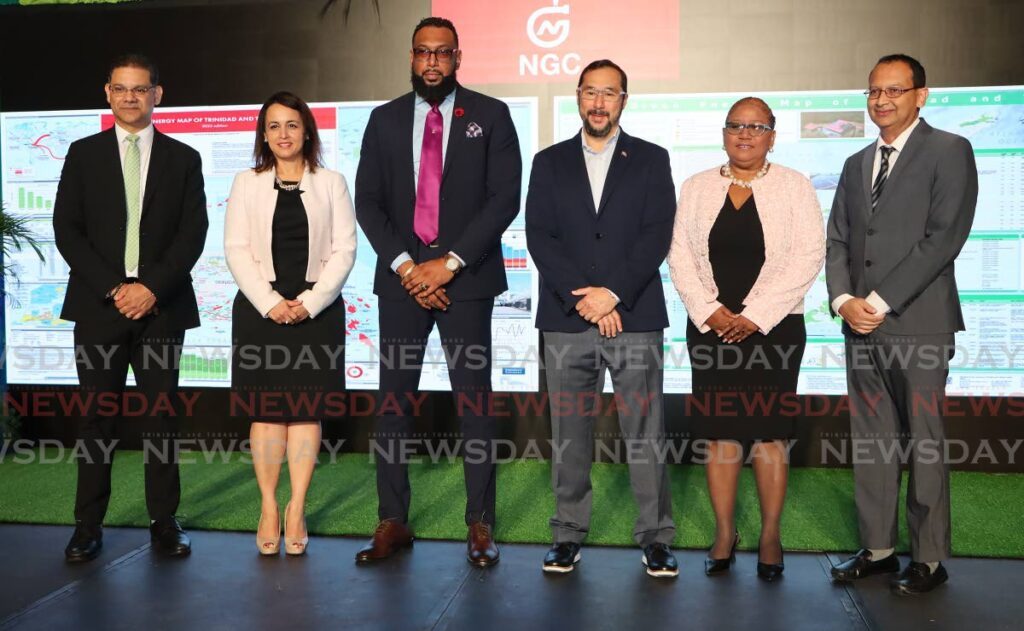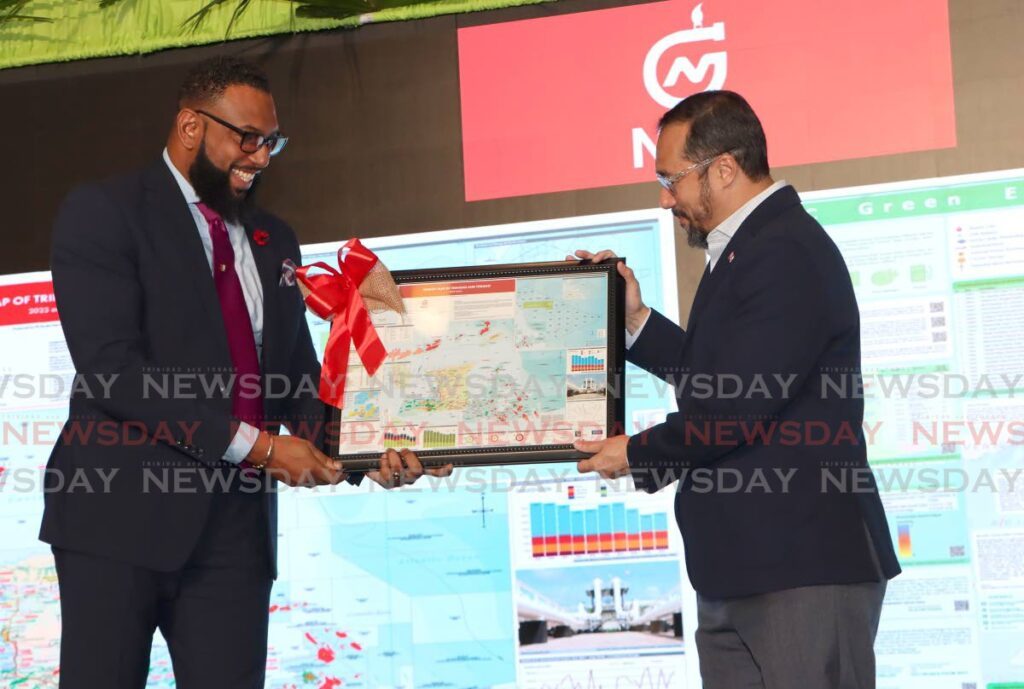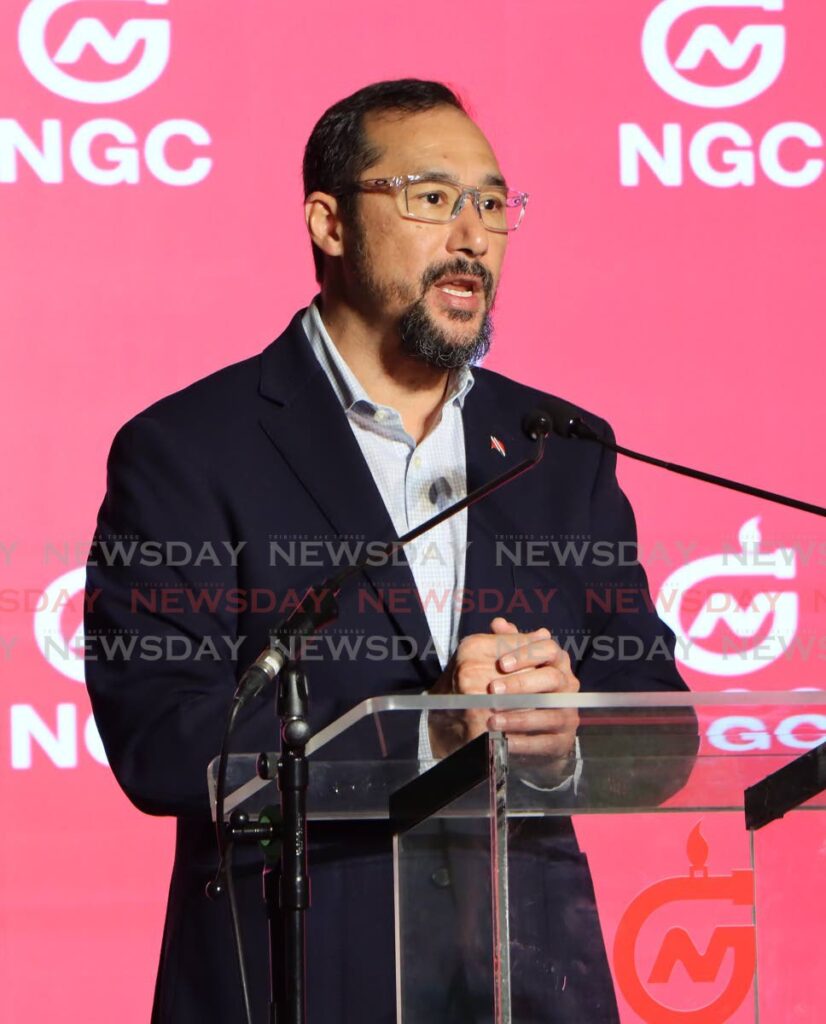NGC releases first updated energy map since 2017

THE NATIONAL Gas Company (NGC) Group released its first energy map of Trinidad and Tobago in seven years on April 22 and its first-ever "green map."
The maps, NGC said, were designed to sensitise the nation about TT's energy infrastructure, exploits and the company's green-energy agenda.
On April 22, NGC presented a copy of the two maps to Energy Minister Stuart Young at Hyatt Regency, Port of Spain.
NGC chairman Joseph Ishmael Khan said the maps do justice to TT’s complex and expansive energy infrastructure.
This infrastructure, he said, "far out into the sea, with enough pipelines in the network to line the shores of Trinidad multiple times.
“The fact that this infrastructure is largely invisible makes these maps even more striking – they are almost like X-ray images, revealing hidden structures and systems that (power) our country.”
Khan said the energy network displayed on the map, “from platforms to pipelines to plants – it is much easier for us as citizens to appreciate the reference that energy is the backbone of our economy.
“It is much easier to understand how a small country like TT could become a giant in global energy.
“It is also much easier to appreciate why so much diplomacy, research, investment, planning and development centre on this sector.”

Khan said the maps are important tools for public education and sensitisation to the group’s advances.
Sole-sponsor NGC released the map in 2005 and updated it in 2012, 2015 and 2017.
The conventional and "green" maps were produced with guidance from UK energy multimedia firm Petroleum Economist, with input from the Ministry of Energy and energy companies operating in TT.
NGC said its portfolio of carbon reduction and sustainability activities, referred to as its Green Agenda, aims to raise awareness of the need and strategies for addressing climate change. Like earlier versions, the 2023 map will be “utilised in applications (supporting) NGC’s brand promotions and its efforts in energy education at international and regional fora,” the company said.
The conventional energy map includes information related to TT’s LNG exports; history of gas, crude oil and condensate production; deepwater area designated for development; business and investment legislation; methanol and ammonia gas-usage trends.
The new green map displays hydrocarbon-based energy assets; TT’s solar and wind energy potential; the location of CNG stations; LNG production data; regional clean energy projects and targets; the location of NGC’s reforestation programme sites, (which serve as carbon offsets in support of the energy transition), and the NGC Group and other local companies’ renewable energy projects.
Khan said while the NGC’s footprint dominates the map, it not just “a flourish of branding,” but “an authentic indication of how deeply and widely NGC is involved in the energy value chain.
“You will see us in upstream as joint venture partners in offshore blocks. You will see us in downstream as a shareholder in the LNG business and an independent marketer of energy commodities.
“Of course, you will see our pipelines everywhere, like arteries transporting the lifeblood of our economy to the end-users of gas.”
Khan said NGC’s move to produce a map focused on hydrocarbon and a separate green energy map aligned with the company’s focus on clean energy and energy efficiency.
He said pressure is mounting for climate action to be accelerated, as the deadlines we set for ourselves based on planetary limits loom large on the horizon.
“Adjusting our energy diets to include more renewables is an integral part of the global climate action plan, and (is something) that we in TT certainly need to support.”
NGC’s new subsidiary, the NGC Green Company, launched in January, is headed by president Toni Sirju-Ramnarine. She will manage the low-carbon projects and investments, including compressed natural gas (CNG) marketing and operations.

Khan said, “(Experts) agree that gas has an anchoring role...in the energy transition, as a low-carbon fuel that is already widely available and can be easily integrated into existing energy systems."
He said by updating the previous map and creating a new one focused on clean energy data, NGC has declared that both have value and are relevant.
“Indeed, if you look at the Green Energy Map, you’ll see we have included data on NGC’s infrastructure. This is a strong visual cue that gas must work alongside green.” NGC acting president Verlier Quan-Vie said NGC uses the energy maps to “demystify” the energy sector.
She described the maps as "comprehensive cartographical illustrations of the key elements and interconnectivity of our domestic and regional resources and statistics."
These maps, she said, have allowed stakeholders to gain a clearer understanding of how energy resources are distributed and utilised locally and internationally.

Comments
"NGC releases first updated energy map since 2017"